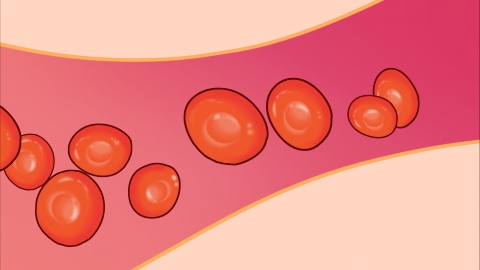How is a blood clot treated?
Under normal circumstances, thrombosis may be caused by advanced age and vascular aging, pregnancy and postpartum period, antithrombin deficiency, congenital abnormal fibrinogenemia, and gene mutations leading to a thrombophilic state. General treatment and drug therapy can be employed to improve these conditions. Prompt medical consultation and adherence to medical advice are necessary. Specific details are as follows:

1. Advanced Age and Vascular Aging: With aging, blood vessel walls gradually deteriorate, losing elasticity and becoming roughened internally. These changes increase the likelihood of blood turbulence and deposition within vessels, promoting thrombus formation. Maintaining a healthy lifestyle, including moderate exercise, balanced nutrition, smoking cessation, and alcohol moderation is recommended. Regular physical examinations are also important for timely detection and management of vascular abnormalities.
2. Pregnancy and Postpartum Period: During pregnancy, hormonal changes and hemodynamic alterations may elevate blood viscosity, increasing the risk of thrombosis. In the postpartum period, prolonged bed rest and reduced physical activity can slow blood flow, further promoting thrombus formation. Regular prenatal checkups and coagulation function monitoring are advised. Early ambulation post-delivery is encouraged to enhance circulation.
3. Antithrombin Deficiency: Antithrombin is an essential endogenous anticoagulant. Its deficiency results in increased procoagulant components in the blood, raising the risk of thrombosis, which may be accompanied by pain. Anticoagulant therapy with medications such as warfarin sodium tablets, aspirin enteric-coated tablets, and urokinase for injection may be prescribed according to medical guidance.
4. Congenital Abnormal Fibrinogenemia: This inherited disorder involves abnormal fibrinogen, predisposing patients to thrombosis. As fibrinogen plays a key role in blood coagulation, its dysfunction may increase clotting tendency, potentially causing swelling. Under medical supervision, medications such as rivaroxaban tablets, aspirin enteric-coated tablets, and clopidogrel bisulfate tablets may be used for anticoagulant and antiplatelet therapy.
5. Thrombophilia Due to Genetic Mutations: Gene mutations may confer susceptibility to thrombosis. This thrombophilic state could result from multiple factors, including abnormal platelet function, coagulation factor dysfunction, or deficiencies in anticoagulant proteins, sometimes presenting with cutaneous bruising. Treatment under medical guidance may involve medications such as irbesartan tablets, hydroxychloroquine sulfate tablets, and alfacalcidol soft capsules.
Throughout treatment, adherence to prescribed medication schedules and attention to lifestyle and dietary modifications are essential for facilitating recovery.










